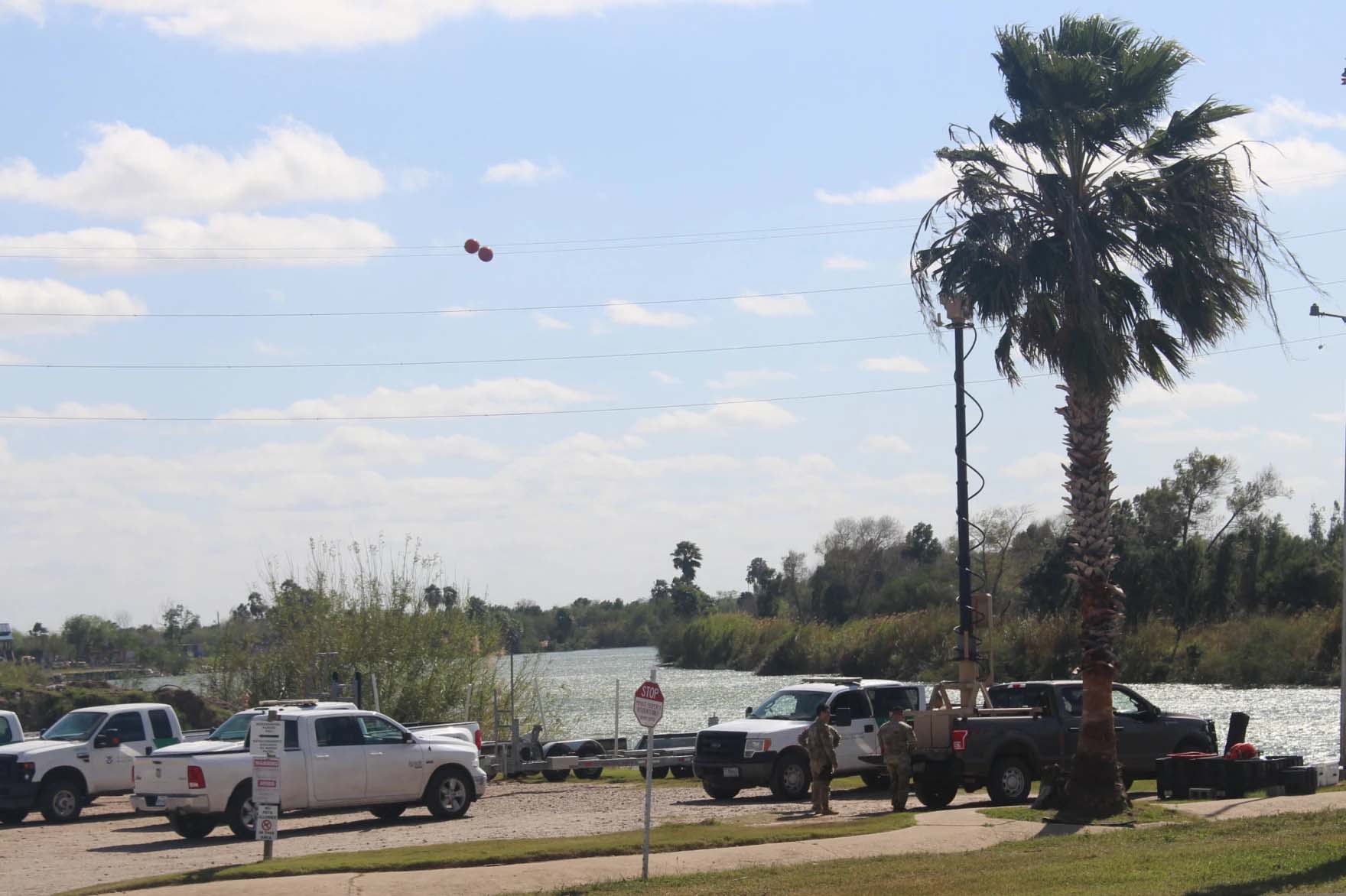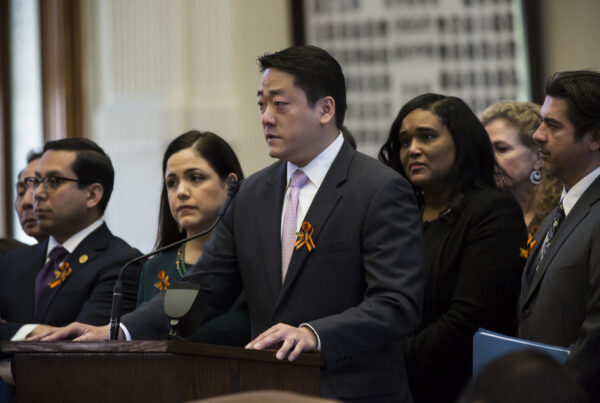From the American Homefront Project:
Chimney Park RV Resort in Mission, Texas, is a lush oasis of palm trees and natural vegetation. The 55-and-older community sits on the bank of the Rio Grande River, nestled behind a tall metal border fence. Big motorhomes sit alongside little bungalows and trailers.
Wanda Liptow, a so-called “Winter Texan,” has been coming to the resort from Wisconsin with her husband since 2007. One February afternoon, she circled the property in a golf cart greeting her neighbors, who hail from all over.
“Here we have Canada, Minnesota, Nebraska,” she said, pointing to different license plates. “You can tell the northern states are represented here.”
Liptow has other neighbors, too. Border Patrol agents launch their patrol boats at Chimney Park. On most days, two National Guard troops sit facing the river in a pickup truck with a raised camera in its bed. Sometimes they stop to use the clubhouse facilities or grab a snack from the lounge.
“They’re just nice young men and probably a long way from home,” Liptow said, smiling. “There are lots of grandmas and grandpas around here.”
The last four presidential administrations have sent National Guard troops to the southwest border. About 2,400 of them are now watching the border and helping the Department of Homeland Security in other ways.
Katherine Kuzminski, a researcher with the Center for a New American Security, said the long-running mission raises a big question: “Is this the proper role for the National Guard or does that indicate that there needs to be more resourcing for the Department of Homeland Security and Customs and Border Protection?”
Kuzminski suspects part of the reason that the Guard has been deployed so long is because it’s easier politically. Money for the Guard comes out of the defense budget, which is less controversial than border security funding.
“So this is a way to quietly fill that capacity need without having to renegotiate budget items or increase a budget,” she said.

At the Chimney Park RV Resort in Mission, Texas, it’s common to see Border Patrol agents and National Guard troops. They surveil the Rio Grande River area on the U.S./Mexico border.
Carson Frame / American Homefront
The Department of Homeland Security wants the National Guard’s help and has made repeated requests for it. In turn, the military provides manpower, equipment, and expertise to help Customs and Border Protection agents.
“We found that there was a real need with tasks such as maintaining vehicles, as well as conducting border surveillance,” said Elizabeth Field, director of the Government Accountability Office’s defense capabilities and management team. “Customs and Border Protection Officials told us that they really have a challenge when it comes to recruiting personnel.”
Defense Secretary Lloyd Austin has said the military shouldn’t be involved at the border long term — and that Homeland Security should develop the ability to conduct operations on its own. But the two agencies have struggled to come to an agreement.
According to a Defense Department spokesman, “DoD support is best suited for exceptional, temporary crises at the southwest border rather than for a steady-state border security mission – a mission DHS should be resourced to accomplish.”
Field said the long mission is costing the Defense Department — both in money and readiness. Troops deployed to the border are typically housed in hotels “which provide suitable accommodations for cost efficient rates and preserve unit integrity,” a Defense Department spokesman said.
“This is not a small amount of money, even for the Defense Department,” Field said. “We also found that the National Guard had, in some cases, had to cancel training exercises because troops were on the border performing this function.”
In addition to the federal troops sent to the border by the last four presidents, Texas Governor Greg Abbott has also mobilized some members of his state’s National Guard to the border on state active duty orders to support the Department of Public Safety.
In Laredo, a major port of entry, Mayor Victor Trevino said the troops make some residents feel safer — and also deter vigilantes from trying to police the border themselves. But he said the Guard isn’t a permanent solution to the challenges created by changing migration patterns.
“Their mere presence and their necessity to be here as support entities just shows us how much we need immigration reform,” Trevino said. “We’re just putting a Band-Aid on everything. We’re just holding the fort, in other words.”
Lawmakers are trying to better understand the Defense Department’s role at the border. A provision in the latest defense budget requires the department to brief Congress quarterly about the mission.















